#leipzig leben
Text




#moritz in seinen ersten beiden episoden because LOOK at him#soko leipzig#moritz brenner#das ewige leben#johannes hendrik langer#mine
33 notes
·
View notes
Text

leipzig 2024
7 notes
·
View notes
Photo
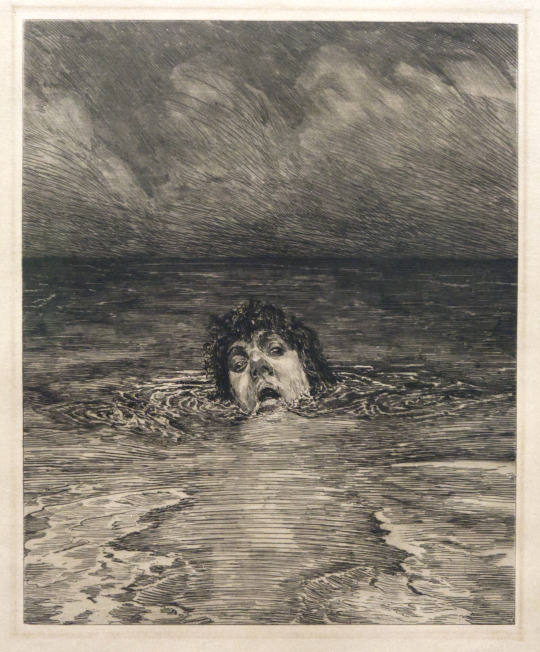
Max KLINGER (1857-1920)
“Untergang (Ein Leben)” - “Going Under (A Life)” (1884)
Radierung und Kaltnadel / Etching and drypoint
Sammlung / Collection ALBERTINA Wien / Vienna
Ausstellung / Exhibition
Dürer, Munch, Miró.
The Great Masters of Printmaking
ALBERTINA Wien / Vienna - 2023
#max klinger#untergang#ein leben#going under#a life#klinger#symbolist#painter#sculptor#printmaker#graphic artist#writer#Symbolismus#symbolism#leipzig
39 notes
·
View notes
Photo





Moritz: “Ganz der Sohn vom alten Brenner. Nicht so ne Enttäuschung wie sein kleiner Bruder.”
Bent: “Ja, da hast du Recht.”
Moritz: “Du bist mir gefolgt, weil ich dein Bruder bin. Aber nicht, weil du Angst um mich hattest. Sondern um den guten Namen der Familie und um deine scheiß Karriere.”
Bent: “Ja, da hast du Recht. Du bist eine einzige Enttäuschung.”
Moritz: “Ja. Immer gewesen.”
#bent ich könnt dir den ganzen tag nur in die fresse hauen#scheiß auf dich und deine pokale#und dein kleiner bruder sieht mit der knarre in der hand tausendmal heißer aus als du#soko leipzig#moritz brenner#bent brenner#das ewige leben#mypics#myedit#johannes hendrik langer
33 notes
·
View notes
Text
Wir reden viel zu wenig über diesen Moritz.😔

#moritz brenner#das ewige leben#spoiler#soko leipzig#ich lass ihn hier so kommentarlos stehen#bild spricht für sich#😌❤️#johannes hendrik langer#manchmal bedarf es keiner worte
8 notes
·
View notes
Text
"Kennst du den Reiterhof?"
"Ja, ich war früher mit deiner Mutter ganz oft hier, als wir so 13, 14, 15 waren. [...]"
"Mama und du, ihr wart so Pferdemädchen?"
"Ja, total!"

7 notes
·
View notes
Text



























einzelhaft, theodor kotulla 1988
#credits#einzelhaft#tatort#theodor kotulla#götz george#bavaria#wdr#1988#gods of the plague#zodiac#ich bin den sommer über in berlin geblieben#aus einem deutschen leben#material#buw#landmann#flyweight#obst & gemüse oder der kunde ist könig#heimspiel#about photography#zs23#plagwitz#leipzig#jva#696#freie hilfe#gesobau#mdr#mw
0 notes
Text
für heute hab ich meine Laufrunde schon weg! – Wochenende! –
bissel wild umhergeknipst ………… Leipzig, Kreisfreie Stadt Leipzig, Sachsen
View On WordPress
0 notes
Text
Herlinde Koelbl "Metamorphosen": Leipzig bis 01.04.2024
Herlinde Koelbl, Ikone der zeitgenössischen Fotografie, deren konsequenten Dokumentationen die Veränderungen von Menschen und Medien in das Zentrum ihres Schaffens stellen, hat in den letzten Jahren ihren Blick von den Menschen auf die Natur erweitert. Bekannt wurde sie mit ihrem Langzeitprojekt der Neunzigerjahre, „Spuren der Macht. Die Verwandlung des Menschen durch das Amt”. Auf ihren vielen…
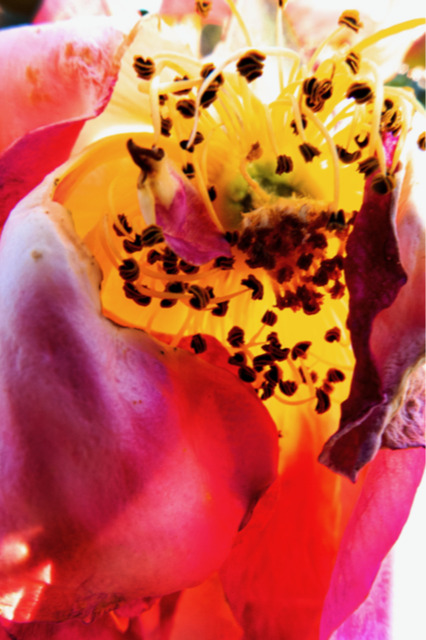
View On WordPress
#Blumen#der erste Schrei#Flora#Fokus#Fotografie#Fotokunst#Grassimuseum für angewandte Kunst#Herlinde Koelbl#Inspiration#Leben#Leipzig#Leuchtkasten#Metamorphosen#Montaigne#Natur#Pflanzen#Reisen#Remember Room#Spuren der Macht#Sterben#Ursprung des Lebens#Verwandlung
1 note
·
View note
Text
Herr Rettig ist einfach der größte cutie überhaupt. Wie er einfach komplett erschöpft auf seinem Schreibtisch eingepennt ist. Ich kann nicht mehr...
0 notes
Text


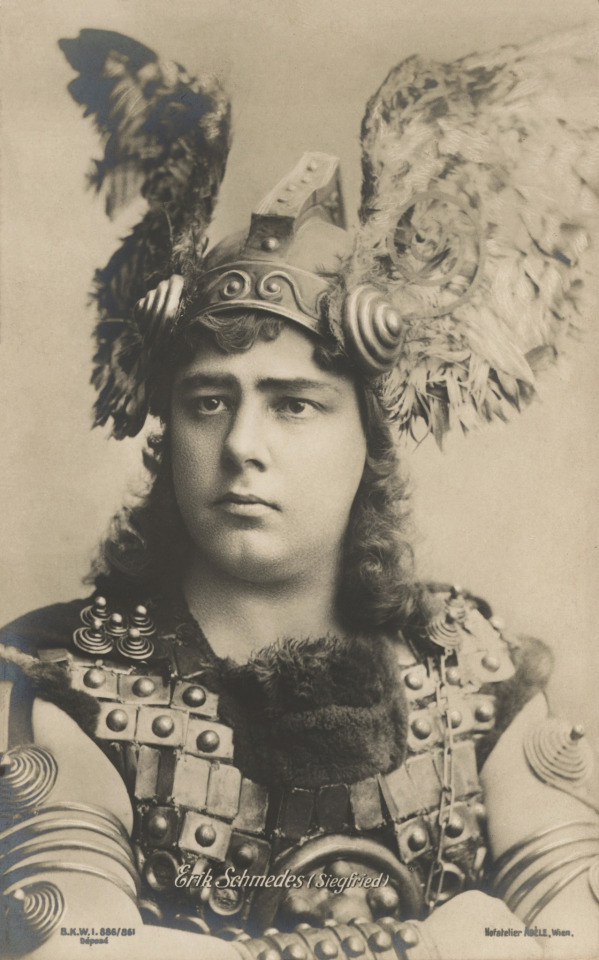
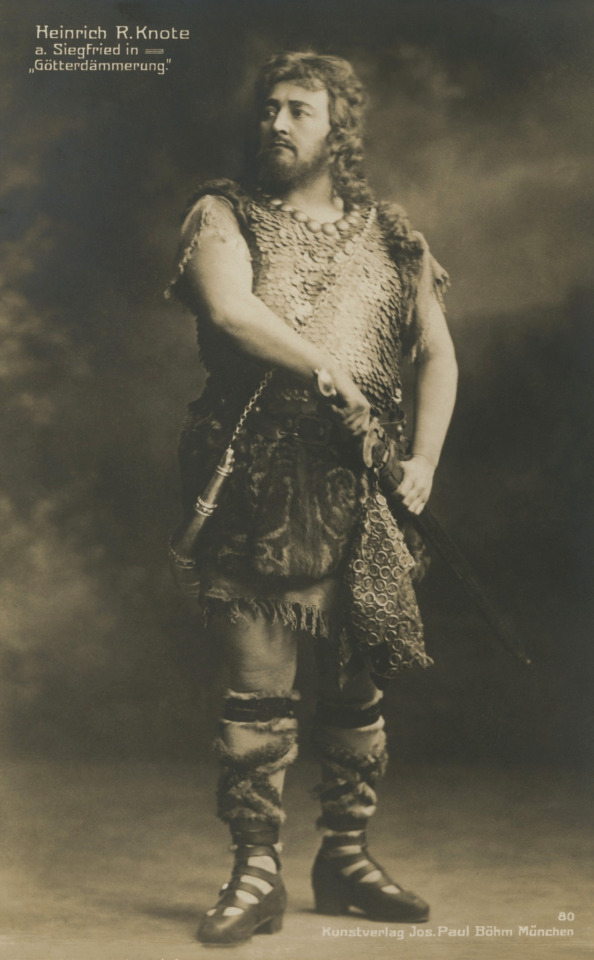


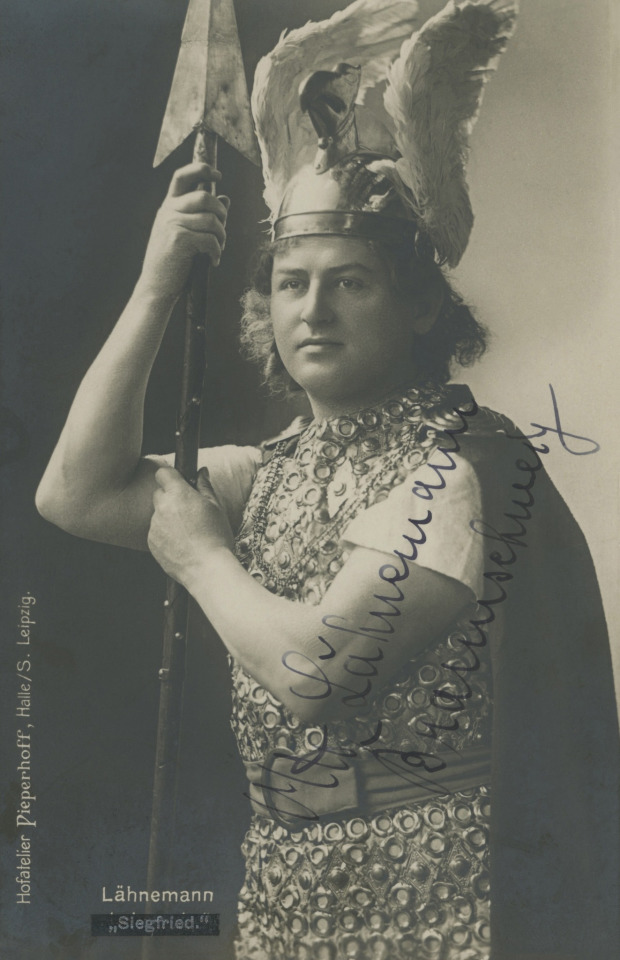
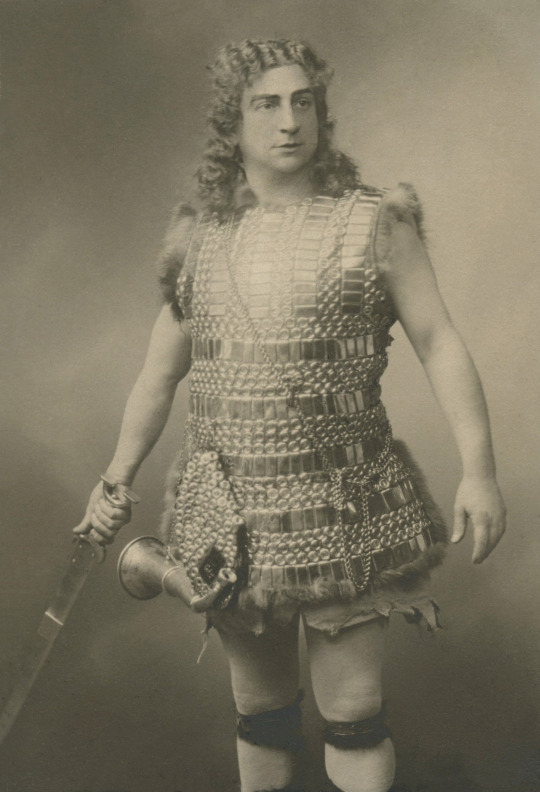



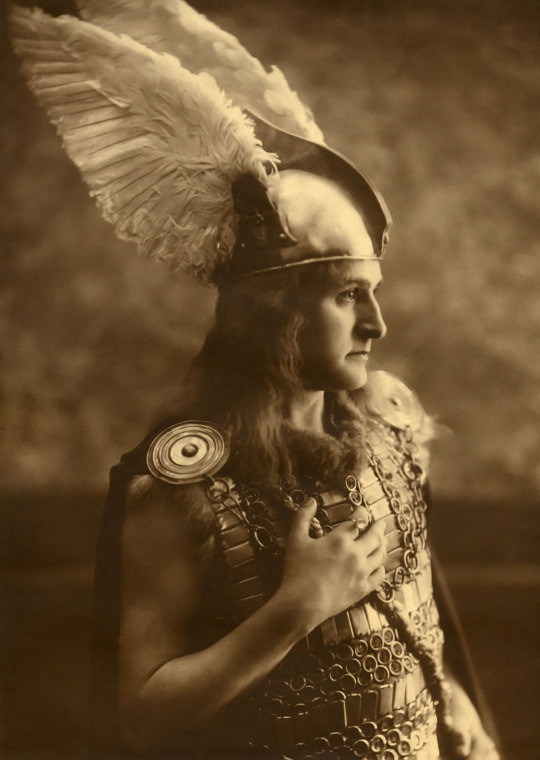
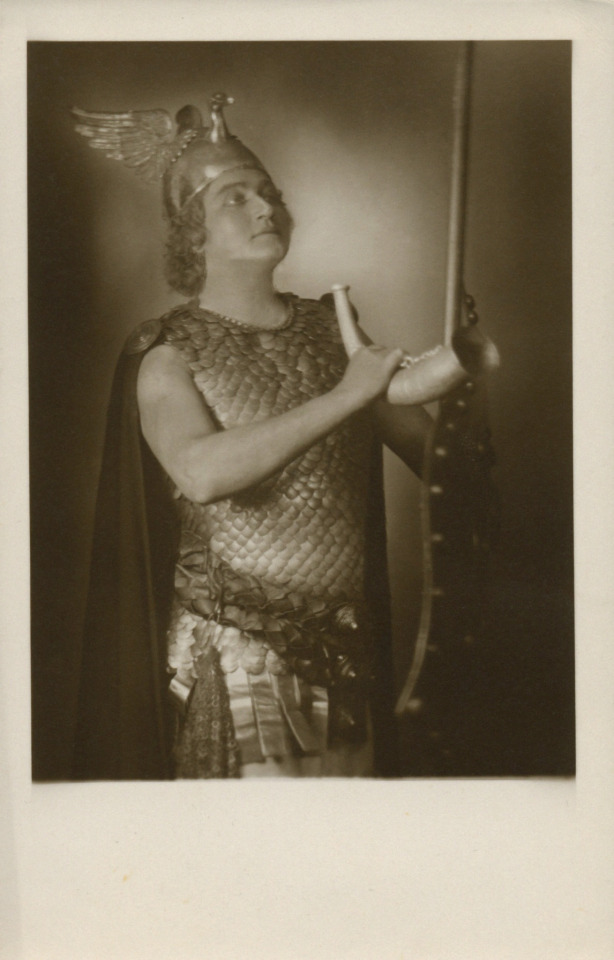


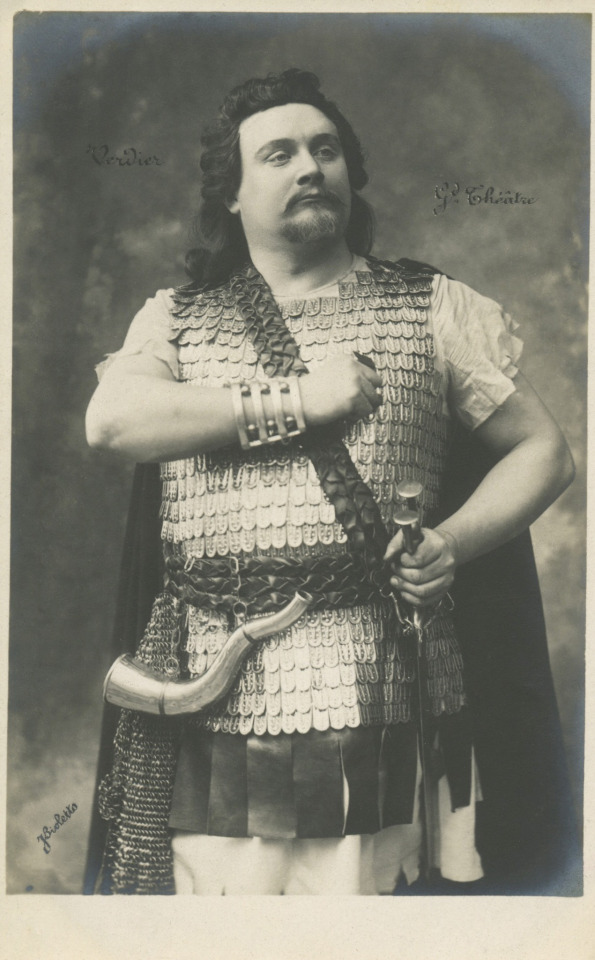

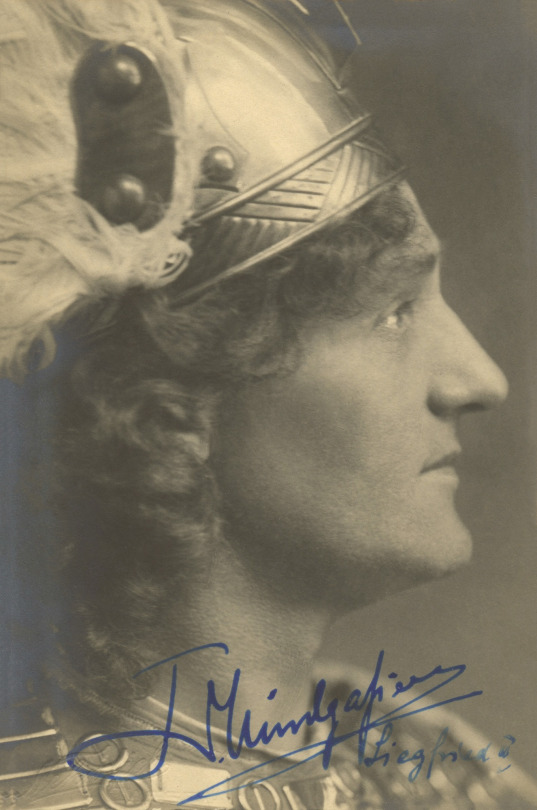

„GÖTTERDÄMMERUNG“ R. WAGNER
„HEIL DIR, SIEGFRIED, SIEGENDES LICHT!
HEIL, STRAHLENDES LEBEN!“
Some Siegfrieds.
Ernst Kraus as Siegfried; ?, ?
Theo Strack as Siegfried; ?, ?
Erik Schmedes as Siegfried; Vienna, ?
Heinrich Knote as Siegfried; Munich, ?
Carl Burrian as Siegfried; Dresden, ?
Fritz Vogelstrom as Siegfried; Dresden, 1916
Otto Lähnemann as Siegfried; Leipzig /Braunschweig, ?
Max Merter Teer Mer as Siegfried; Zurich, ?
Richard Kubla as Siegfried; Vienna (Volksoper), ?
Alois Pennarini as Siegfried; ?, ?
Dr. Julius Pölzer as Siegfried; Munich, 1932
Josef Schöffel as Siegfried; Karlsruhe, ?
Rudolf Ritter as Siegfried; Bayreuth, 1924
Lauritz Melchior as Siegfried; London, 1929 (picture from Bayreuth)
Hans Tänzler as Siegfried; Berlin, ?
Marius Verdier as Siegfried; Lyon, ?
Jacques Urlus as Siegfried; ?, ?
Fritz Windgassen as Siegfried; Stuttgart, ?
Dr. Horst Wolf as Siegfried; Coburg, ?
#classical music#opera#music history#bel canto#composer#classical composer#aria#classical studies#maestro#chest voice#Götterdämmerung#Twilight of the Gods#Richard Wagner#Musikdrama#Der Ring des Nibelungen#The Ring of the Nibelung#The Ring Cycle#Old Norse#Ragnarök#Norse mythology#Siegfried#classical musician#classical musicians#historian of music#history of music#classical history#musician#musicians#music drama#Epic poetry
12 notes
·
View notes
Photo


Jan: “...naja, und am Ende haben das Mädchen und das Pferd das Turnier gewonnen und der Reiterhof ist gerettet, das Mädchen mit dem Stallburschen zusammen und alle stehen am Zaun und lachen.”
Moritz: “Und so endet jeder Pferdefilm?”
Jan: “Ja. Ausnahmslos.”
#ich erkenne hier ein muster#erst das traumschiff und jetzt DAS#moritz und jan sprechen über die wirklich wichtigen dinge im leben#muhaha#soko leipzig#soko leipzig spoiler#moritz brenner#jan maybach#mypics#myedit
35 notes
·
View notes
Text
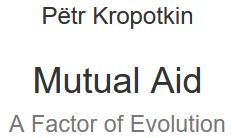
Footnotes 1 - 100
[1] Origin of Species, chap. iii.
[2] Nineteenth Century, Feb. 1888, p. 165.
[3] Leaving aside the pre-Darwinian writers, like Toussenel, Fée, and many others, several works containing many striking instances of mutual aid — chiefly, however, illustrating animal intelligence were issued previously to that date. I may mention those of Houzeau, Les facultés etales des animaux, 2 vols., Brussels, 1872; L. Büchner’s Aus dem Geistesleben der Thiere, 2nd ed. in 1877; and Maximilian Perty’s Ueber das Seelenleben der Thiere, Leipzig, 1876. Espinas published his most remarkable work, Les Sociétés animales, in 1877, and in that work he pointed out the importance of animal societies, and their bearing upon the preservation of species, and entered upon a most valuable discussion of the origin of societies. In fact, Espinas’s book contains all that has been written since upon mutual aid, and many good things besides. If I nevertheless make a special mention of Kessler’s address, it is because he raised mutual aid to the height of a law much more important in evolution than the law of mutual struggle. The same ideas were developed next year (in April 1881) by J. Lanessan in a lecture published in 1882 under this title: La lutte pour l’existence et l’association pour la lutte. G. Romanes’s capital work, Animal Intelligence, was issued in 1882, and followed next year by the Mental Evolution in Animals. About the same time (1883), Büchner published another work, Liebe und Liebes-Leben in der Thierwelt, a second edition of which was issued in 1885. The idea, as seen, was in the air.
[4] Memoirs (Trudy) of the St. Petersburg Society of Naturalists, vol. xi. 1880.
[5] See Appendix I.
[6] George J. Romanes’s Animal Intelligence, 1st ed. p. 233.
[7] Pierre Huber’s Les fourmis indigëes, Génève, 1861; Forel’s Recherches sur les fourmis de la Suisse, Zurich, 1874, and J.T. Moggridge’s Harvesting Ants and Trapdoor Spiders, London, 1873 and 1874, ought to be in the hands of every boy and girl. See also: Blanchard’s Métamorphoses des Insectes, Paris, 1868; J.H. Fabre’s Souvenirs entomologiques, Paris, 1886; Ebrard’s Etudes des mœurs des fourmis, Génève, 1864; Sir John Lubbock’s Ants, Bees, and Wasps, and so on.
[8] Forel’s Recherches, pp. 244, 275, 278. Huber’s description of the process is admirable. It also contains a hint as to the possible origin of the instinct (popular edition, pp. 158, 160). See Appendix II.
[9] The agriculture of the ants is so wonderful that for a long time it has been doubted. The fact is now so well proved by Mr. Moggridge, Dr. Lincecum, Mr. MacCook, Col. Sykes, and Dr. Jerdon, that no doubt is possible. See an excellent summary of evidence in Mr. Romanes’s work. See also Die Pilzgaerten einiger Süd-Amerikanischen Ameisen, by Alf. Moeller, in Schimper’s Botan. Mitth. aus den Tropen, vi. 1893.
[10] This second principle was not recognized at once. Former observers often spoke of kings, queens, managers, and so on; but since Huber and Forel have published their minute observations, no doubt is possible as to the free scope left for every individual’s initiative in whatever the ants do, including their wars.
[11] H.W. Bates, The Naturalist on the River Amazons, ii. 59 seq.
[12] N. Syevertsoff, Periodical Phenomena in the Life of Mammalia, Birds, and Reptiles of Voronèje, Moscow, 1855 (in Russian).
[13] A. Brehm, Life of Animals, iii. 477; all quotations after the French edition.
[14] Bates, p. 151.
[15] Catalogue raisonné des oiseaux de la faune pontique, in Démidoff’s Voyage; abstracts in Brehm, iii. 360. During their migrations birds of prey often associate. One flock, which H. Seebohm saw crossing the Pyrenees, represented a curious assemblage of “eight kites, one crane, and a peregrine falcon” (The Birds of Siberia, 1901, p. 417).
[16] Birds in the Northern Shires, p. 207.
[17] Max. Perty, Ueber das Seelenleben der Thiere (Leipzig, 1876), pp. 87, 103.
[18] G. H. Gurney, The House-Sparrow (London, 1885), p. 5.
[19] Dr. Elliot Couës, Birds of the Kerguelen Island, in Smithsonian Miscellaneous Collections, vol. xiii. No. 2, p. 11.
[20] Brehm, iv. 567.
[21] As to the house-sparrows, a New Zealand observer, Mr. T.W. Kirk, described as follows the attack of these “impudent” birds upon an “unfortunate” hawk. — “He heard one day a most unusual noise, as though all the small birds of the country had joined in one grand quarrel. Looking up, he saw a large hawk (C. gouldi — a carrion feeder) being buffeted by a flock of sparrows. They kept dashing at him in scores, and from all points at once. The unfortunate hawk was quite powerless. At last, approaching some scrub, the hawk dashed into it and remained there, while the sparrows congregated in groups round the bush, keeping up a constant chattering and noise” (Paper read before the New Zealand Institute; Nature, Oct. 10, 1891).
[22] Brehm, iv. 671 seq.
[23] R. Lendenfeld, in Der zoologische Garten, 1889.
[24] Syevettsoff’s Periodical Phenomena, p. 251.
[25] Seyfferlitz, quoted by Brehm, iv. 760.
[26] The Arctic Voyages of A.E. Nordenskjöld, London, 1879, p. 135. See also the powerful description of the St. Kilda islands by Mr. Dixon (quoted by Seebohm), and nearly all books of Arctic travel.
[27] See Appendix III.
[28] Elliot Couës, in Bulletin U.S. Geol. Survey of Territories, iv. No. 7, pp. 556, 579, etc. Among the gulls (Larus argentatus), Polyakoff saw on a marsh in Northern Russia, that the nesting grounds of a very great number of these birds were always patrolled by one male, which warned the colony of the approach of danger. All birds rose in such case and attacked the enemy with great vigour. The females, which had five or six nests together On each knoll of the marsh, kept a certain order in leaving their nests in search of food. The fledglings, which otherwise are extremely unprotected and easily become the prey of the rapacious birds, were never left alone (“Family Habits among the Aquatic Birds,” in Proceedings of the Zool. Section of St. Petersburg Soc. of Nat., Dec. 17, 1874).
[29] Brehm Father, quoted by A. Brehm, iv. 34 seq. See also White’s Natural History of Selborne, Letter XI.
[30] Dr. Couës, Birds of Dakota and Montana, in Bulletin U.S. Survey of Territories, iv. No. 7.
[31] It has often been intimated that larger birds may occasionally transport some of the smaller birds when they cross together the Mediterranean, but the fact still remains doubtful. On the other side, it is certain that some smaller birds join the bigger ones for migration. The fact has been noticed several times, and it was recently confirmed by L. Buxbaum at Raunheim. He saw several parties of cranes which had larks flying in the midst and on both sides of their migratory columns (Der zoologische Garten, 1886, p. 133).
[32] H. Seebohm and Ch. Dixon both mention this habit.
[33] The fact is well known to every field-naturalist, and with reference to England several examples may be found in Charles Dixon’s Among the Birds in Northern Shires. The chaffinches arrive during winter in vast flocks; and about the same time, i.e. in November, come flocks of bramblings; redwings also frequent the same places “in similar large companies,” and so on (pp. 165, 166).
[34] S.W. Baker, Wild Beasts, etc., vol. i. p. 316.
[35] Tschudi, Thierleben der Alpenwelt, p. 404.
[36] Houzeau’s Études, ii. 463.
[37] For their hunting associations see Sir E. Tennant’s Natural History of Ceylon, quoted in Romanes’s Animal Intelligence, p. 432.
[38] See Emil Hüter’s letter in L. Büchner’s Liebe.
[39] See Appendix IV.
[40] With regard to the viscacha it is very interesting to note that these highly-sociable little animals not only live peaceably together in each village, but that whole villages visit each other at nights. Sociability is thus extended to the whole species — not only to a given society, or to a nation, as we saw it with the ants. When the farmer destroys a viscacha-burrow, and buries the inhabitants under a heap of earth, other viscachas — we are told by Hudson — “come from a distance to dig out those that are buried alive” (l.c., p. 311). This is a widely-known fact in La Plata, verified by the author.
[41] Handbuch für Jäger und Jagdberechtigte, quoted by Brehm, ii. 223.
[42] Buffon’s Histoire Naturelle.
[43] In connection with the horses it is worthy of notice that the quagga zebra, which never comes together with the dauw zebra, nevertheless lives on excellent terms, not only with ostriches, which are very good sentries, but also with gazelles, several species of antelopes, and gnus. We thus have a case of mutual dislike between the quagga and the dauw which cannot be explained by competition for food. The fact that the quagga lives together with ruminants feeding on the same grass as itself excludes that hypothesis, and we must look for some incompatibility of character, as in the case of the hare and the rabbit. Cf., among others, Clive Phillips-Wolley’s Big Game Shooting (Badminton Library), which contains excellent illustrations of various species living together in East Africa.
[44] Our Tungus hunter, who was going to marry, and therefore was prompted by the desire of getting as many furs as he possibly could, was beating the hill-sides all day long on horseback in search of deer. His efforts were not rewarded by even so much as one fallow deer killed every day; and he was an excellent hunter.
[45] According to Samuel W. Baker, elephants combine in larger groups than the “compound family.” “I have frequently observed,” he wrote, “in the portion of Ceylon known as the Park Country, the tracks of elephants in great numbers which have evidently been considerable herds that have joined together in a general retreat from a ground which they considered insecure” (Wild Beasts and their Ways, vol. i. p. 102).
[46] Pigs, attacked by wolves, do the same (Hudson, l.c.).
[47] Romanes’s Animal Intelligence, p. 472.
[48] Brehm, i. 82; Darwin’s Descent of Man, ch. iii. The Kozloff expedition of 1899–1901 have also had to sustain in Northern Thibet a similar fight.
[49] The more strange was it to read in the previously-mentioned article by Huxley the following paraphrase of a well-known sentence of Rousseau: “The first men who substituted mutual peace for that of mutual war — whatever the motive which impelled them to take that step — created society” (Nineteenth Century, Feb. 1888, p. 165). Society has not been created by man; it is anterior to man.
[50] Such monographs as the chapter on “Music and Dancing in Nature” which we have in Hudson’s Naturalist on the La Plata, and Carl Gross’ Play of Animals, have already thrown a considerable light upon an instinct which is absolutely universal in Nature.
[51] Not only numerous species of birds possess the habit of assembling together — in many cases always at the same spot — to indulge in antics and dancing performances, but W.H. Hudson’s experience is that nearly all mammals and birds (“probably there are really no exceptions”) indulge frequently in more or less regular or set performances with or without sound, or composed of sound exclusively (p. 264).
[52] For the choruses of monkeys, see Brehm.
[53] Haygarth, Bush Life in Australia, p. 58.
[54] To quote but a few instances, a wounded badger was carried away by another badger suddenly appearing on the scene; rats have been seen feeding a blind couple (Seelenleben der Thiere, p. 64 seq.). Brehm himself saw two crows feeding in a hollow tree a third crow which was wounded; its wound was several weeks old (Hausfreund, 1874, 715; Büchner’s Liebe, 203). Mr. Blyth saw Indian crows feeding two or three blind comrades; and so on.
[55] Man and Beast, p. 344.
[56] L.H. Morgan, The American Beaver, 1868, p. 272; Descent of Man, ch. iv.
[57] One species of swallow is said to have caused the decrease of another swallow species in North America; the recent increase of the missel-thrush in Scotland has caused the decrease of the song.thrush; the brown rat has taken the place of the black rat in Europe; in Russia the small cockroach has everywhere driven before it its greater congener; and in Australia the imported hive-bee is rapidly exterminating the small stingless bee. Two other cases, but relative to domesticated animals, are mentioned in the preceding paragraph. While recalling these same facts, A.R. Wallace remarks in a footnote relative to the Scottish thrushes: “Prof. A. Newton, however, informs me that these species do not interfere in the way here stated” (Darwinism, p. 34). As to the brown rat, it is known that, owing to its amphibian habits, it usually stays in the lower parts of human dwellings (low cellars, sewers, etc.), as also on the banks of canals and rivers; it also undertakes distant migrations in numberless bands. The black rat, on the contrary, prefers staying in our dwellings themselves, under the floor, as well as in our stables and barns. It thus is much more exposed to be exterminated by man; and we cannot maintain, with any approach to certainty, that the black rat is being either exterminated or starved out by the brown rat and not by man.
[58] “But it may be urged that when several closely-allied species inhabit the same territory, we surely ought to find at the present time many transitional forms.... By my theory these allied species are descended from a common parent; and during the process of modification, each has become adapted to the conditions of life of its own region, and has supplanted and exterminated its original parent-form and all the transitional varieties between its past and present states” (Origin of Species, 6th ed. p. 134); also p. 137, 296 (all paragraph “On Extinction”).
[59] According to Madame Marie Pavloff, who has made a special study of this subject, they migrated from Asia to Africa, stayed there some time, and returned next to Asia. Whether this double migration be confirmed or not, the fact of a former extension of the ancestor of our horse over Asia, Africa, and America is settled beyond doubt.
[60] The Naturalist on the River Amazons, ii. 85, 95.
[61] Dr. B. Altum, Waldbeschädigungen durch Thiere und Gegenmittel (Berlin, 1889), pp. 207 seq.
[62] Dr. B. Altum, ut supra, pp. 13 and 187.
[63] A. Becker in the Bulletin de la Société des Naturalistes de Moscou, 1889, p. 625.
[64] See Appendix V.
[65] Russkaya Mysl, Sept. 1888: “The Theory of Beneficency of Struggle for Life, being a Preface to various Treatises on Botanics, Zoology, and Human Life,” by an Old Transformist.
[66] “One of the most frequent modes in which Natural Selection acts is, by adapting some individuals of a species to a somewhat different mode of life, whereby they are able to seize unappropriated places in Nature” (Origin of Species, p. 145) — in other words, to avoid competition.
[67] See Appendix VI.
[68] Nineteenth Century, February 1888, p. 165
[69] The Descent of Man, end of ch. ii. pp. 63 and 64 of the 2nd edition.
[70] Anthropologists who fully endorse the above views as regards man nevertheless intimate, sometimes, that the apes live in polygamous families, under the leadership of “a strong and jealous male.” I do not know how far that assertion is based upon conclusive observation. But the passage from Brehm’s Life of Animals, which is sometimes referred to, can hardly be taken as very conclusive. It occurs in his general description of monkeys; but his more detailed descriptions of separate species either contradict it or do not confirm it. Even as regards the cercopithèques, Brehm is affirmative in saying that they “nearly always live in bands, and very seldom in families” (French edition, p. 59). As to other species, the very numbers of their bands, always containing many males, render the “polygamous family” more than doubtful further observation is evidently wanted.
[71] Lubbock, Prehistoric Times, fifth edition, 1890.
[72] That extension of the ice-cap is admitted by most of the geologists who have specially studied the glacial age. The Russian Geological Survey already has taken this view as regards Russia, and most German specialists maintain it as regards Germany. The glaciation of most of the central plateau of France will not fail to be recognized by the French geologists, when they pay more attention to the glacial deposits altogether.
[73] Prehistoric Times, pp. 232 and 242.
[74] Bachofen, Das Mutterrecht, Stuttgart, 1861; Lewis H. Morgan, Ancient Society, or Researches in the Lines of Human Progress from Savagery through Barbarism to Civilization, New York, 1877; J.F. MacLennan, Studies in Ancient History, 1st series, new edition, 1886; 2nd series, 1896; L. Fison and A.W. Howitt, Kamilaroi and Kurnai, Melbourne. These four writers — as has been very truly remarked by Giraud Teulon, — starting from different facts and different general ideas, and following different methods, have come to the same conclusion. To Bachofen we owe the notion of the maternal family and the maternal succession; to Morgan — the system of kinship, Malayan and Turanian, and a highly gifted sketch of the main phases of human evolution; to MacLennan — the law of exogeny; and to Fison and Howitt — the cuadro, or scheme, of the conjugal societies in Australia. All four end in establishing the same fact of the tribal origin of the family. When Bachofen first drew attention to the maternal family, in his epoc.making work, and Morgan described the clan-organization, — both concurring to the almost general extension of these forms and maintaining that the marriage laws lie at the very basis of the consecutive steps of human evolution, they were accused of exaggeration. However, the most careful researches prosecuted since, by a phalanx of students of ancient law, have proved that all races of mankind bear traces of having passed through similar stages of development of marriage laws, such as we now see in force among certain savages. See the works of Post, Dargun, Kovalevsky, Lubbock, and their numerous followers: Lippert, Mucke, etc.
[75] See Appendix VII.
[76] For the Semites and the Aryans, see especially Prof. Maxim Kovalevsky’s Primitive Law (in Russian), Moscow, 1886 and 1887. Also his Lectures delivered at Stockholm (Tableau des origines et de l’évolution de la famille et de la propriété, Stockholm, 1890), which represents an admirable review of the whole question. Cf. also A. Post, Die Geschlechtsgenossenschaft der Urzeit, Oldenburg 1875.
[77] It would be impossible to enter here into a discussion of the origin of the marriage restrictions. Let me only remark that a division into groups, similar to Morgan’s Hawaian, exists among birds; the young broods live together separately from their parents. A like division might probably be traced among some mammals as well. As to the prohibition of relations between brothers and sisters, it is more likely to have arisen, not from speculations about the bad effects of consanguinity, which speculations really do not seem probable, but to avoid the too-easy precocity of like marriages. Under close cohabitation it must have become of imperious necessity. I must also remark that in discussing the origin of new customs altogether, we must keep in mind that the savages, like us, have their “thinkers” and savants — wizards, doctors, prophets, etc. — whose knowledge and ideas are in advance upon those of the masses. United as they are in their secret unions (another almost universal feature) they are certainly capable of exercising a powerful influence, and of enforcing customs the utility of which may not yet be recognized by the majority of the tribe.
[78] Col. Collins, in Philips’ Researches in South Africa, London, 1828. Quoted by Waitz, ii. 334.
[79] Lichtenstein’s Reisen im südlichen Afrika, ii. Pp. 92, 97. Berlin, 1811.
[80] Waitz, Anthropologie der Naturvolker, ii. pp. 335 seq. See also Fritsch’s Die Eingeboren Afrika’s, Breslau, 1872, pp. 386 seq.; and Drei Jahre in Süd Afrika. Also W. Bleck, A Brief Account of Bushmen Folklore, Capetown, 1875.
[81] Elisée Reclus, Géographie Universelle, xiii. 475.
[82] P. Kolben, The Present State of the Cape of Good Hope, translated from the German by Mr. Medley, London, 1731, vol. i. pp. 59, 71, 333, 336, etc.
[83] Quoted in Waitz’s Anthropologie, ii. 335 seq.
[84] The natives living in the north of Sidney, and speaking the Kamilaroi language, are best known under this aspect, through the capital work of Lorimer Fison and A.W. Howitt, Kamilaroi and Kurnaii, Melbourne, 1880. See also A.W. Howitt’s “Further Note on the Australian Class Systems,” in Journal of the Anthropological Institute, 1889, vol. xviii. p. 31, showing the wide extension of the same organization in Australia.
[85] The Folklore, Manners, etc., of Australian Aborigines, Adelaide, 1879, p. 11.
[86] Gray’s Journals of Two Expeditions of Discovery in North-West and Western Australia, London, 1841, vol. ii. pp. 237, 298.
[87] Bulletin de la Société d’Anthropologie, 1888, vol. xi. p. 652. I abridge the answers.
[88] Bulletin de la Société d’Anthropologie, 1888, vol. xi. p. 386.
[89] The same is the practice with the Papuas of Kaimani Bay, who have a high reputation of honesty. “It never happens that the Papua be untrue to his promise,” Finsch says in Neuguinea und seine Bewohner, Bremen, 1865, p. 829.
[90] Izvestia of the Russian Geographical Society, 1880, pp. 161 seq. Few books of travel give a better insight into the petty details of the daily life of savages than these scraps from Maklay’s notebooks.
[91] L.F. Martial, in Mission Scientifique au Cap Horn, Paris, 1883, vol. i. pp. 183–201.
[92] Captain Holm’s Expedition to East Greenland.
[93] In Australia whole clans have been seen exchanging all their wives, in order to conjure a calamity (Post, Studien zur Entwicklungsgeschichte des Familienrechts, 1890, p. 342). More brotherhood is their specific against calamities.
[94] Dr. H. Rink, The Eskimo Tribes, p. 26 (Meddelelser om Grönland, vol. xi. 1887).
[95] Dr. Rink, loc. cit. p. 24. Europeans, grown in the respect of Roman law, are seldom capable of understanding that force of tribal authority. “In fact,” Dr. Rink writes, “it is not the exception, but the rule, that white men who have stayed for ten or twenty years among the Eskimo, return without any real addition to their knowledge of the traditional ideas upon which their social state is based. The white man, whether a missionary or a trader, is firm in his dogmatic opinion that the most vulgar European is better than the most distinguished native.” — The Eskimo Tribes, p. 31.
[96] Dall, Alaska and its Resources, Cambridge, U.S., 1870.
[97] Dall saw it in Alaska, Jacobsen at Ignitok in the vicinity of the Bering Strait. Gilbert Sproat mentions it among the Vancouver indians; and Dr. Rink, who describes the periodical exhibitions just mentioned, adds: “The principal use of the accumulation of personal wealth is for periodically distributing it.” He also mentions (loc. cit. p. 31) “the destruction of property for the same purpose,’ (of maintaining equality).
[98] See Appendix VIII.
[99] Veniaminoff, Memoirs relative to the District of Unalashka (Russian), 3 vols. St. Petersburg, 1840. Extracts, in English, from the above are given in Dall’s Alaska. A like description of the Australians’ morality is given in Nature, xlii. p. 639.
[100] It is most remarkable that several writers (Middendorff, Schrenk, O. Finsch) described the Ostyaks and Samoyedes in almost the same words. Even when drunken, their quarrels are insignificant. “For a hundred years one single murder has been committed in the tundra;” “their children never fight;” “anything may be left for years in the tundra, even food and gin, and nobody will touch it;” and so on. Gilbert Sproat “never witnessed a fight between two sober natives” of the Aht Indians of Vancouver Island. “Quarreling is also rare among their children.” (Rink, loc. cit.) And so on.
#organization#revolution#mutual aid#anarchism#daily posts#communism#anti capitalist#anti capitalism#late stage capitalism#anarchy#anarchists#libraries#leftism#social issues#economy#economics#climate change#anarchy works#environmentalism#environment#solarpunk#anti colonialism#a factor of evolution#petr kropotkin
16 notes
·
View notes
Text
I love them, your honor! pt.2





#soko leipzig#kim nowak#moritz brenner#ina zimmermann#jan maybach#my pics#my edits#spoiler#das leben ist kein ponyhof#gute szene... niemand kann Rettig so richtig folgen
12 notes
·
View notes
Text

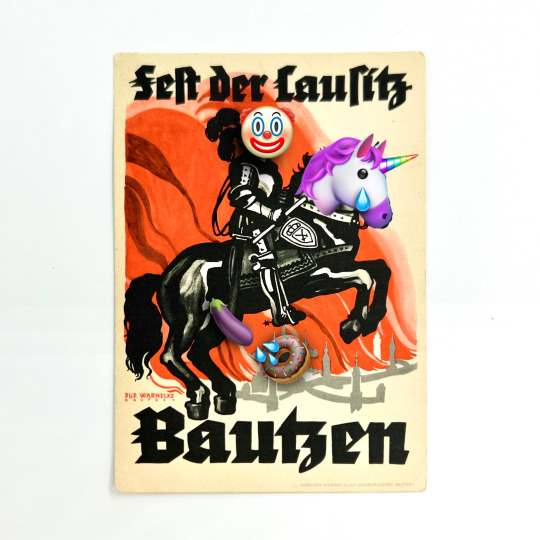



'Decolonize - Die Ravensteiner Gurke'
Digital Collage, 375 x 375 mm, 2024
Fine Art Pigment Print under Acrylic Glass,
Black Aluminium Art Box
Die Ravensteiner Gurke
Hutzenstuben, Trutzburgen, oder Oh-Oh-Oh (doch kein) Osterreiter
Die hölzernen - manieristisch - druckgeschwärzten - expressiv - gotischen Schnitte des tausendjährigen Bautzens von Rudolf Warnecke erfreuen sich quer durch alle bildungsverbrämten Gruppen jeglicher politischer Couleur immer noch großer Beliebtheit und sind in vielen Haushalten, die ich in der Oberlausitz kenne, noch im Original zu finden. Die Buchhandlungen sind voll dieser Trutzburgen-Heimelei, welche den wohligen Schauer dunkler Zeiten der zweimal abgefeierten (1933 und 2002) tausendjährigen Geschichte als Souvenir mit den TouristInnen den Weg nach Hause finden - nachdem die Kurzweilenden der indizierten T-Shirt Freakshow auf dem Kornmarkt überdrüssig geworden sind.
Ich bin mit diesen altertümlichen Bildern meiner Geburtsstadt aufgewachsen und empfand immer ein gewisses Unbehagen beim Anblick dieser schon zu der Zeit ihrer Entstehung aus der Zeit gefallenen Darstellungen dieser Stadt. Gewiss sind einige dieser Holzschnitte ikonisch in der Darstellung der Stadt und ich möchte dem Schöpfer nicht das Handwerk als Holzschneider absprechen. Aber es fehlt mir an kritischer Einordnung und Reflektion aller AkteurInnen in der Oberlausitzer Kulturlandschaft zu einem Künstler und seinem Werk, der noch 1942 in der ‚Großen Deutschen Kunstausstellung‘ mit der Arbeit ‚Stillende Mutter‘ vertreten war. Dann 1943 ein Titelbild für die Zeitschrift ‚Deutsche Leibeszucht‘. Anzumerken ist, dass der Künstler wegen seiner Weigerung, in die NSDAP einzutreten, gegen Ende des Krieges seine Anstellung als Ausstellungsleiter am Stadtmuseum Bautzen verlor und zum Heeresdienst eingezogen wurde. Soweit so normal: Ein Karriereknick reichte bei vielen nach dem Krieg als Beleg für den Widerstand gegen das Naziregime.
Der zugegeben härteste Triggerpunkt für mich war, als Anfang diesen Jahres in Görlitz eine kleine Ausstellung gezeigt wurde, die den Künstler in eine Reihe mit Alwin Brandes, Hanka Krawcec, Johannes Wüsten, Paul Sinkwitz und Rosa Luxemburg stellte. Das expressiv erstarrte, alle Stadtbrände überdauernde Hexenhaus, als das Symbolbild eines tausendjährigen Bautzen neben einer Abbildung aus dem Herbarium von Rosa Luxemburg schmerzt dann doch sehr. Der Diskurs darüber blieb aus oder drang nicht durch ins oberste Stübchen meines gläsernen Elfenbeinturms im fernen Leipzig.
Vor einigen Wochen fand ich eine Ansichtskarte, welche für das ‚Fest der Lausitz‘ 1935 gestaltet wurde und 1941 immer noch im Umlauf war - wie die Stempel auf mehreren erhaltenen Exemplaren belegen. Der schwarze ‚Ritter‘ auf seinem schwarzen Hengst vor dem brennenden Bautzen. Ist es eine Szene aus dem Dreißigjährigen Krieg, als die kurfürstlichen Sachsen (das Wappen auf dem Schild lässt es vermuten) die Stadt belagerten? In der Folge dieser kriegerischen Auseinandersetzungen wurde das böhmische Bautzen samt dem Markgraftum Oberlausitz 1635 den Sachsen zugeschlagen. Die Perspektive, dreihundert Jahre später, ist eine großdeutsche und Rudolf Warnecke weiß den gewünschten Ton des Regimes zu treffen, welches die geplante Kolonisierung der ‚Ostgebiete‘ mit Ereignissen wie dem ‘Fest der Lausitz’ historisch begründen will. Ab 1937 wurde sorbisches Leben systematisch unterdrückt.
In einer Region, die 79 Jahre nach Kriegsende regelmäßig in der Presse wegen rechter Verhaltensauffälligkeiten gewürdigt wird und sich darüber jedes Mal ungerecht behandelt fühlt, ist der Künstler immer noch im kulturellen Mainstream verankert. Ich empfinde diese Trutzburgen-Kreuzritter-Ästhetik als zutiefst Slawen-feindlich und nicht im geringsten die Ursprünge dieser zweisprachigen Region und Heimat einer autochthonen Bevölkerungsgruppe widerspiegelnd. Die - hoffentlich nicht - kommende blau-schwarze Regierung frohlockt ob dieser braunäugigen Sehschwäche. Regelmäßig erscheinen vor meinem inneren Auge rotierende Rundumleuchten, wenn dieser Tage der Künstler und sein Werk aufploppen. Das ist nicht zwingenderweise der Aufruf zum Bildersturm, sondern lediglich eine Aufmunterung, mal eine andere und ich betone, nicht-identitäre Perspektive einzunehmen.
#SB2130#Bernhard Schipper#Neue Sorbische Kunst#leipzig artist#nsk folk art#Decolonization#anti colonialism#SorbianSettlementArea#SerbskiSydlenskiRum#SerbskiSedleńskiRum#SorbischesSiedlungsgebiet#Bautzen#Budyšin#Wenden#Sorben#Serbja#Serby#sorbisch#Sorbs#autochthon#indigen#postcolonial#artisticresearch#RudolfWarnecke#undoingcolonialism
6 notes
·
View notes
Text

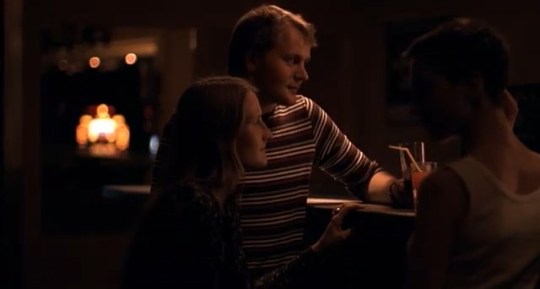






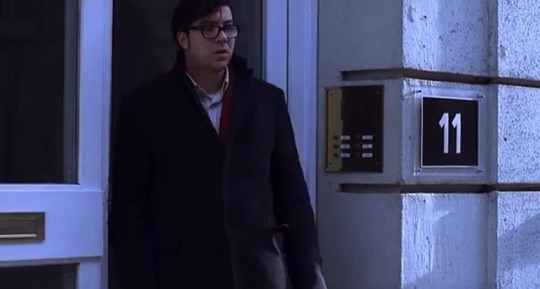




mein langsames leben, angela schanelec 2001
#mein langsames leben#angela schanelec#2001#about photography#filmkombinat#essen#buw#leipzig#focus immobilien gmbh#reenactment#stalker#rheingold#sputnik
1 note
·
View note